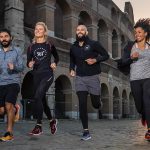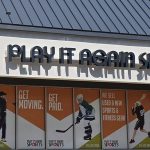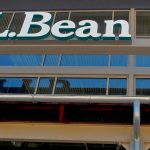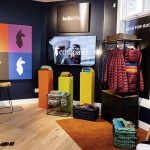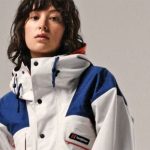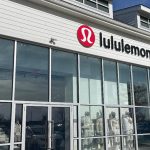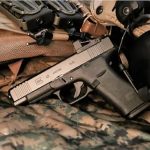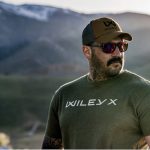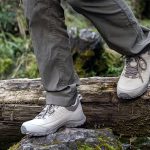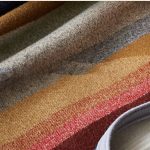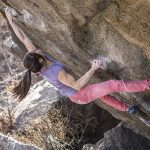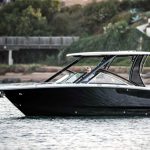The Bicycle, Outdoor, and SnowSports market saw continued energy in the second quarter, fueled by successful IPOs, additional acquisitions, and further consolidation of the business. The quarter saw the Retail sector outpace the Vendor sector in profit growth, reversing the trend from the first, even as the Hardgoods segment swung to a profit in the period versus a loss in the year-ago quarter.
The B.O.S.S. Report presents an overview of second quarter industry results in the chart on page three. Results are posted for those companies that have reported for the period ended closest to the end of June. Because the report is not a clear picture of the entire industry, BOSS feels the total numbers are less significant than the trending information provided in the percentage increases and decreases. BOSS has added Quiksilver to the reporting companies for the second quarter, as it completes its acquisition of Rossignol and moves to develop a North America winter sports headquarters in Park City (BOSS_0537). Volcom also makes its debut on the chart for Q2 after a wildly successful IPO on the last day of June. VLCM shares closed Friday at $27.90, up nearly 47% from its $19 offering price.
Zumiez completed its IPO during the period as well, with shares for the Seattle-based action sports retailer closing up more than 38% over the offering price the first day of trading in early May. ZUMZ shares have continued to thrill, closing last week at $31.66, or up 76% from the $18 opening price.
Total sales for Vendor companies tracked in this quarters report increased 15.8% while the profit line increased 51.0% for the period. Gross margins were up nearly 55 basis points, on average, to 43.1% of sales in Q2. Return-on-sales jumped 100 basis points to 4.6% of sales, thanks to a move to profitability in the Hardgoods business.
Companies in the Softgoods sector saw profit growth outpace sales growth by nearly four percentage points, a much more modest differential than in quarters past. Organic sales growth in the Softgoods sector was up approximately 9.0%, excluding the acquisition aided growth at Phoenix Footwear, Rocky Shoes & Boots, and VF Outdoor coalition. Phoenix sales would have actually declined 14.6% for the period without the inclusion of the Altama acquisition and Rocky sales would have been flat without the benefit of the EJ Footwear acquisition.
VF Outdoor got a nice lift from Vans, Kipling, and Napapijri again in Q2 and also added Reef to the mix, but still saw 9.0% organic growth for the period.
Deckers went from the biggest sales gainer in the last few quarters to the only decliner for the second quarter in Softgoods as late summer weather hurt sales of sandals at the Teva brand. Margins and net income were also hurt as the company moved to liquidate inventory before quarter-end. DECK is a very different company going forward as former president Bob Orlando moves into a similar role at Royal Robbins (PXG) and Teva sales VP Jay McGregor moves over to Spyder Active Sports to head their sales effort. Much of the companys future fortunes will depend on what new CEO Angel Martinez can bring to the party in the way of closed-toe footwear, expanded fashion offerings, and international focus.
On an organic growth basis, the biggest sales increase for the quarter came from Volcom (+48.1%), with only Quiksilver joining them in double-digit growth for the period. The bottom line for the Softgoods sector would have certainly suffered if not for the acquisition-aided profit gains at Rocky and VF Outdoor, thanks to sharp declines and heavy markdown inventories at Columbia and Deckers.
In the Hardgoods sector, Orange 21 led all organic growth with a 36.2% increase in sales for the period, with Riddell Bell Holdings posting a 15.7% increase on a pro-forma basis. RBH reported a 208% sales increase for the quarter, thanks to the addition of the Bell Sports business since last years second quarter. The 700 basis point decline in gross margin at RBH and the subsequent net income decline can be tracked back to the lower margin business at Bell. Riddells team sports year-on-year margins were actually up 110 basis points for the period. Oakley was the other winner for the quarter as the company got off of its negative track and posted double-digit sales growth for the period, thanks in large part to new technology-aided product. Margins and net income also got a boost as the company shifted back to more higher margin sunglass sales and relied less on the footwear business.
K2 Inc., while showing a strong double-digit gain in the top line, saw about 13 points of the growth coming from the acquisitions of Marmot, Ex Officio, Volkl, and Marker, while the sharp decline in net income was attributed to the investment required in the winter sports brands that have higher levels of fixed expenses in Q2 while gearing up for shipments in the third quarter. Those expenses more than offset the 230 basis point improvement in gross margin that was attributed to “higher gross margins in the Team Sports and Apparel and Footwear segments.”
Forzani Group, Canadas largest sporting goods retailer was the only full-line retailer reporting a decline in the Retail sector bottom line as they move to reposition a number of their retail nameplates.
Excluding Forzani, Sporting Goods segment profits would have been up 36.0% on 8.0% sales growth, and would have grown more than 26% excluding the merger integration charges at TSA and DKS. But it was Gander Mountain that had the biggest impact on the bottom line numbers in the Retail sector as the company posted another quarter of comp store sales growth and saw margins decline on the lack of a co-branded credit card. The retailer got even more bad news after the end of the fiscal quarter as a judge ruled that Gander could not use its own name in catalog or Internet sales efforts (BOSS_0535).
Excluding the impact of merger integration charges associated with the Dicks Sporting Goods/Galyans deal and the year-ago merger integration charges for the TSA/Gart deal, profit growth would have still increased more than 58% for the second quarter as the increased upside at DKS was offset by the reduced upside at TSA versus last years fully loaded P&L.

